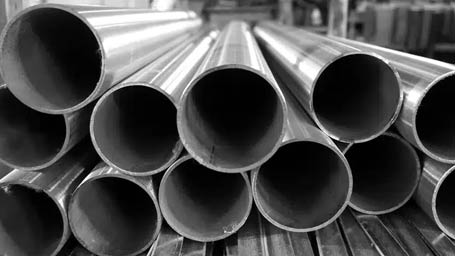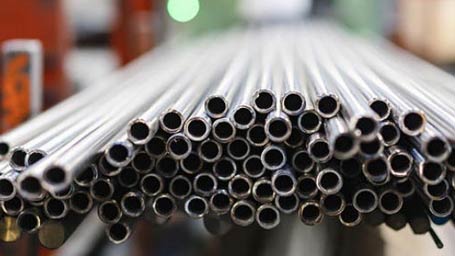Pipe & Tube
Pipes are typically used for the transportation of liquids, gases, or other substances. They are generally measured by their outer diameter and wall thickness, and they come in various materials such as carbon steel, stainless steel, and plastic. Commonly used standards for pipes include ASTM, ANSI, and API, with specific grades designed for high-pressure, high-temperature, or corrosive environments. Pipe sizes typically range from small diameters for residential use to large diameters for industrial or oil and gas applications.
Tubes, while similar in appearance to pipes, differ mainly in their dimension and application. Tubes are typically measured by their outside diameter and wall thickness, but unlike pipes, tubes are often used in structural applications or where precise dimensions and tolerances are required. Tubes can be made from a variety of materials, including stainless steel, aluminum, and copper, and are commonly found in industries like aerospace, medical, automotive, and manufacturing. Tubes are also used for heat exchangers, condensers, and hydraulic systems.
specifications
| Specification Parameter | Pipe | Tube |
|---|---|---|
| Material | Carbon Steel, Stainless Steel, Alloy Steel, PVC, Copper | Stainless Steel, Carbon Steel, Aluminum, Copper, Brass |
| Standard | ASTM, ANSI, API, ASME, DIN, JIS | ASTM, ANSI, ASME, DIN, JIS |
| Size Range | 1/8" to 72" (6mm to 1800mm) | 1/8" to 12" (6mm to 300mm) |
| Wall Thickness | 1/8" to 1" (3mm to 25mm) | 0.5mm to 25mm |
| Length | 20ft (6 meters) or custom lengths | Custom lengths up to 6 meters |
| Tensile Strength | 400 MPa to 1,500 MPa (varies by material) | 350 MPa to 1,300 MPa (varies by material) |
| Yield Strength | 250 MPa to 1,100 MPa (varies by material) | 200 MPa to 800 MPa (varies by material) |
| Elongation | 20% to 45% (varies by material) | 10% to 40% (varies by material) |
| Surface Finish | Mill, polished, galvanized, painted | Bright, polished, mill, anodized, galvanized |
| Corrosion Resistance | Good to excellent (depends on material) | Excellent (for stainless steel, aluminum, etc.) |
| Applications | Fluid transport (water, gas, oil), HVAC, structural applications | Heat exchangers, automotive, medical, aerospace, structural |
| Common Grades/Alloys | Stainless Steel 304, 316, 321, Carbon Steel A106, A53, API 5L, Alloy Steel | Stainless Steel 304, 316, 310, Aluminum 6061, Copper, Brass |
| Form | Round, Square, Rectangular | Round, Square, Rectangular, Custom shapes |


Applications
-
Pipe Applications:
- Fluid Transport: Pipes are widely used for transporting liquids, gases, and other substances in industries like oil and gas, water supply, and sewage systems. They are used to move materials such as water, natural gas, oil, chemicals, and steam.
- HVAC Systems: Pipes are critical components in heating, ventilation, and air conditioning (HVAC) systems for carrying fluids like refrigerants, water, and air.
- Oil & Gas Industry: Pipes are extensively used for drilling, transporting crude oil, natural gas, and other hydrocarbons from wells to refineries or processing plants.
- Industrial & Commercial: Pipes are essential in power plants, chemical processing plants, food and beverage manufacturing, and pharmaceutical industries, where they transport raw materials, chemicals, and finished products.
- Construction & Infrastructure: Large pipes are used in water supply systems, stormwater drainage, and sewer systems, as well as for structural purposes in construction.
-
Tube Applications:
- Aerospace: Tubes are used for structural and hydraulic systems in aircraft, ensuring lightweight but strong components that can withstand extreme conditions.
- Automotive: Tubes are found in car parts such as exhaust systems, radiators, and fuel lines, as well as in structural components where precise tolerances and high strength are required.
- Medical: Stainless steel tubes are commonly used for medical implants, surgical instruments, and diagnostic equipment, due to their biocompatibility and ability to resist corrosion.
- Heat Exchangers: Tubes are widely used in heat exchangers for industrial processes and HVAC systems, as they facilitate efficient heat transfer.
- Food & Beverage: Tubes are used in food processing equipment, particularly in heat exchangers and systems for pasteurizing liquids, due to their hygienic properties and ability to resist corrosion.
- Manufacturing: Tubes are crucial in manufacturing industries for producing precise parts, structural components, and as part of hydraulic and pneumatic systems.
- Construction: Tubes are used for structural purposes in buildings, bridges, and other infrastructure projects, offering strength and flexibility.



